Dogs can still overheat while playing in the pool, so recognizing the signs early can help prevent serious health problems.
Even when dogs are surrounded by water, hot weather and overexertion can lead to overheating. Pool play can be risky because owners may think the water will keep their dog cool at all times.
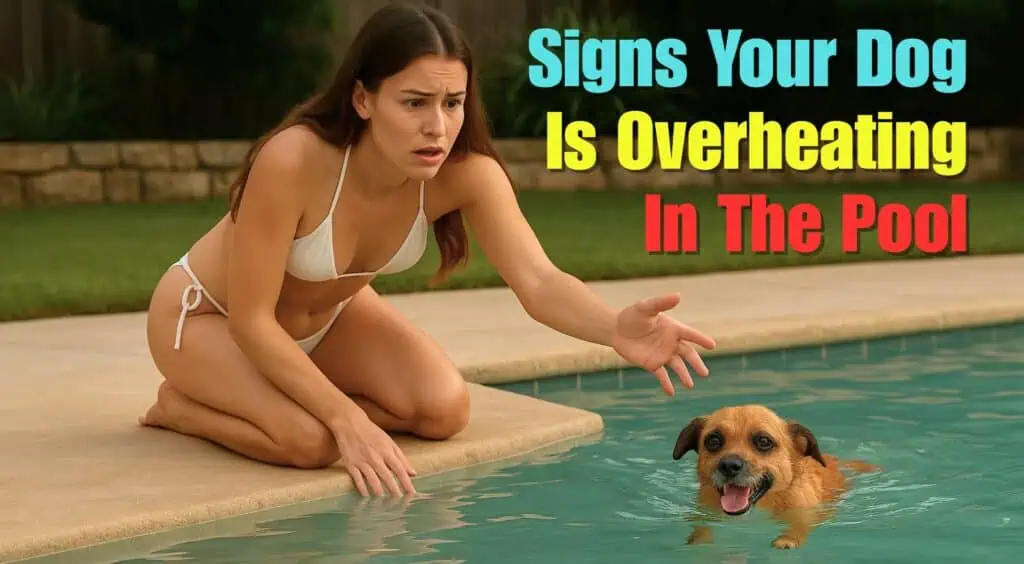
Watch for excessive panting, drooling, red gums or tongue, and labored breathing. Sometimes dogs get weak, vomit, or just seem a little out of it.
Keeping an eye out for these warning signs while your dog’s in or around the pool could save you both a lot of trouble.
Why Dogs May Overheat in the Pool
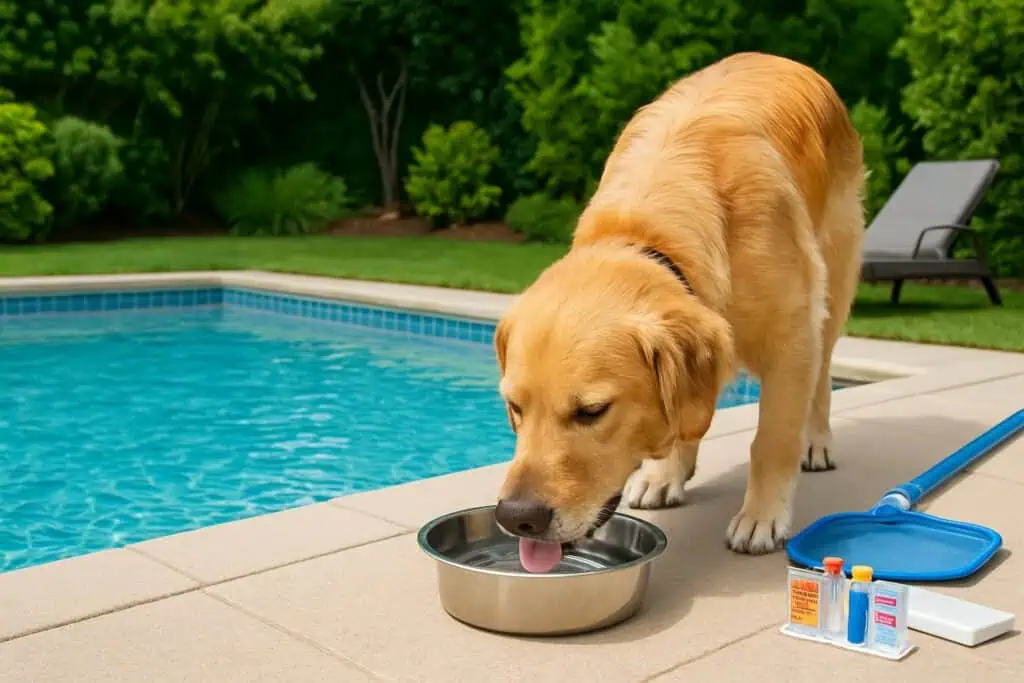
Dogs overheat in pools because their bodies just aren’t made to cool down like ours.
High water temps, breed quirks, or just plain old age can all stack the odds against them. They don’t sweat like we do, so even in the water, they’re stuck relying on panting and a few other tricks to keep their temp in check.
Understanding Canine Thermoregulation
Dogs cool down by panting, pushing heat out through the moisture in their breath. Their sweat glands? Mostly in their paws, and honestly, that doesn’t do much for overall cooling. When it’s hot or they’re swimming hard, panting might not be enough.
Their fur, especially when wet, can hang onto heat instead of letting it escape. So, a wet dog in warm weather might have a tougher time cooling off than you’d expect.
When a dog can’t cool down fast enough, their body temperature climbs. That’s when you run into heat exhaustion or even heat stroke. If you notice rapid panting, bright red gums, or your dog just seems wiped out or collapses, you’re in the danger zone.
Water Temperature and Overexertion
Pool water that feels fine to us might actually be too warm for your dog. Once the water temperature goes above 75-80°F (24-27°C), it’s harder for dogs to lose heat. That’s especially true for thick-coated breeds.
If your dog swims too long or plays too rough, they burn through energy and build up heat fast. Without breaks, shade, or plenty of fresh water, they can overheat in no time.
Pools can reflect sunlight, too, which just adds to the heat around your dog’s head and upper body. When you add humidity or a lack of breeze, it’s a recipe for heat-related trouble.
Breed and Age Risk Factors
Short-nosed breeds, think Bulldogs, Pugs, really struggle to pant efficiently. That makes them prime candidates for overheating, especially during summer swims.
Puppies and older dogs often can’t handle rising temps as well. Overweight pups and those with thick or dark coats? They need a little extra care, too.
If your dog has heart or breathing issues, it’s even riskier. Keep a close eye on high-risk breeds, young pups, and seniors anytime they’re in the water.
Recognizing Signs Your Dog Is Overheating in the Pool
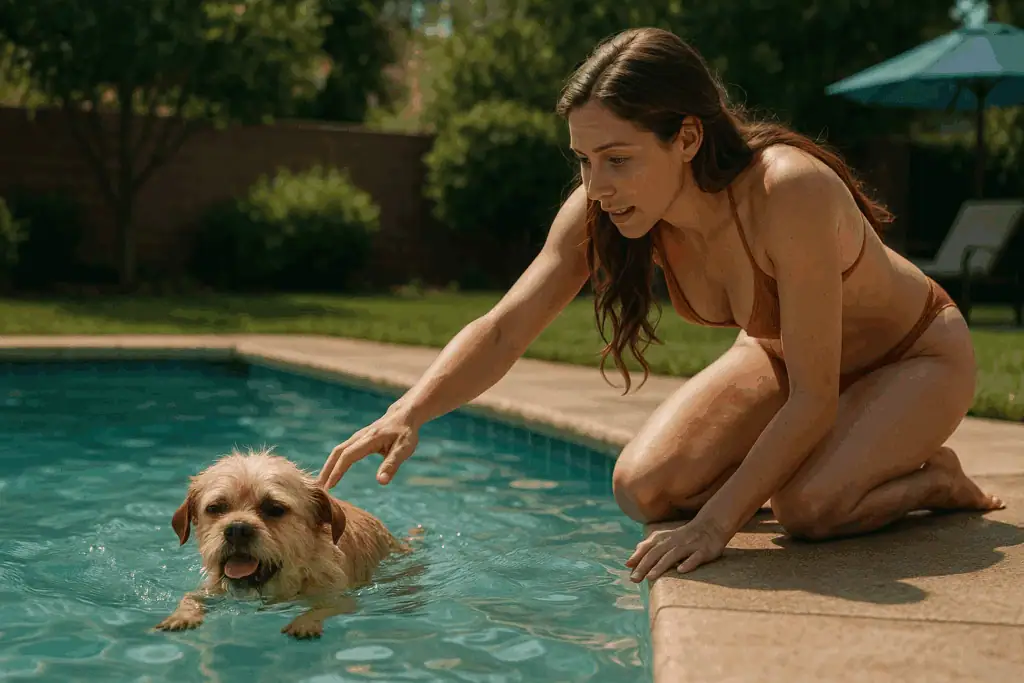
Dogs can overheat fast, even in the pool. Spotting the warning signs early can make all the difference.
Critical Physical Symptoms
Physical symptoms usually show up first. Excessive panting stands out; if your dog is panting way more or harder than normal, they’re trying to cool down.
Check for bright red or dark gums and tongue. Sometimes gums go dry instead of slick, which isn’t great. Excessive salivating and a dry nose can mean your dog’s body is struggling with the heat.
Vomiting or diarrhea might show up. In worse cases, dogs collapse, get really weak, or seem unable to stand or walk. A rapid heartbeat or a body temperature over 104°F? That’s a straight-to-the-vet situation.
| Physical Symptom | What It Means |
|---|---|
| Excessive panting | Body is too hot |
| Red/dark gums or tongue | Heat stress or lack of cooling |
| Excessive drooling | Overheating response |
| Weakness/collapse | Possible heatstroke |
Behavioral Changes to Watch For
Overheated dogs often act off. Lethargy is common. They seem tired, slow, or just not interested in playing. Sometimes they ignore commands they usually follow.
Restlessness can pop up, too. Pacing, not settling down, maybe trying to get out of the pool or find shade. If your dog stops swimming or just floats awkwardly, pay attention.
In really bad cases, confusion or even seizures can happen. If your dog seems disoriented or doesn’t recognize you, that’s an emergency. These behavioral changes matter just as much as the physical stuff.
Heatstroke and Heat Exhaustion: Dangers and Differences
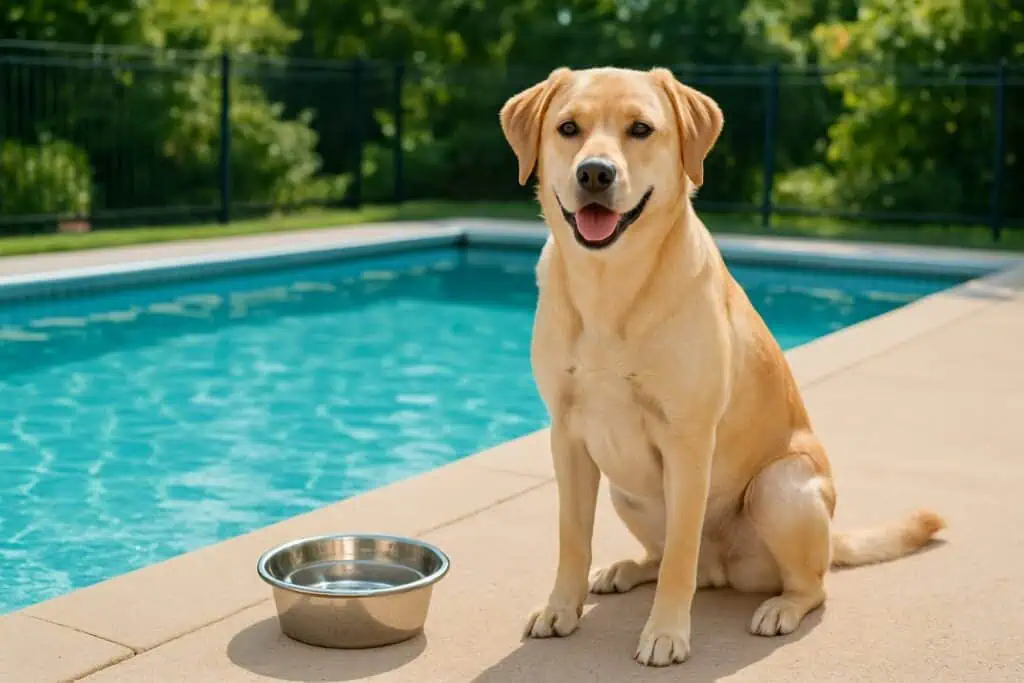
Heat stroke and heat exhaustion are both serious for pool-loving dogs. Spotting the specific signs of overheating in dogs and knowing what to do on the spot can keep your dog safe, maybe even save their life.
Symptoms of Heatstroke in Dogs
Heat stroke is a medical emergency. When a dog’s body temperature shoots above 106°F (41°C), things can go downhill fast. Watch for:
- Heavy, persistent panting
- Rapid heart rate
- Bright red or dark pink gums and tongue
- Muscle tremors or seizures
- Vomiting or diarrhea
- Weakness, confusion, or collapse
Dogs might drool a ton or look anxious. High body temps can damage the brain and organs quickly. Without fast help, heat stroke can be deadly.
Understanding Heat Exhaustion in Dogs
Heat exhaustion isn’t as severe as heat stroke but still needs quick action. It’s basically the warning stage. Some symptoms overlap but tend to be milder:
- Excessive, constant panting
- Drinking a lot more water than normal
- Tiredness or sluggishness
- Seeking shade or trying to get out of the pool
- Fast but steady heartbeat
The gums usually turn dark pink. If you don’t cool your dog down, heat exhaustion can turn into heat stroke before you know it. Any odd behavior on a hot or muggy day deserves attention.
Immediate Steps if You Suspect Heat Stroke or Overheating
If you think your dog’s overheating, don’t wait – get your dog out of the pool and away from the heat right away to help your dog cool.
- Move your dog to a shaded area.
- Wet them down with cool (not cold) water.
- Offer fresh, cool water to drink.
- Use a fan to help lower their body temp.
- Skip the ice; it can actually cause shock.
If your dog vomits, collapses, or has seizures, or if things just aren’t improving after a few minutes, get to a vet ASAP. When in doubt—or if your dog passes out—call your vet.
Preventative Measures to Keep Your Dog Safe

Good pool safety habits go a long way for dogs who love swimming. Focusing on smart routines and controlled water time can make all the difference for their health.
Safe Swimming Practices
Never leave your dog unsupervised near or in the pool. Teach your dog to use steps or a ramp to get in and out—panic isn’t fun for anyone, especially a tired dog.
A pool fence keeps dogs from sneaking unsupervised dips. Life jackets are a solid idea for small dogs or weak swimmers. Even if your dog’s a pro, a vest never hurts.
Basic training—commands like “come” and “leave it”—can really boost pool safety. Rinse your dog off after swimming to get rid of chlorine, which can be rough on skin and eyes.
Make sure there is plenty of water available to drink to prevent dehydration.
Monitoring Pool Time and Rest Intervals
Don’t let your dog swim endlessly. They might not know when to quit, especially if they’re having a blast. Plan rest breaks every 10-15 minutes. Make sure there’s shade and cool water nearby for them to relax.
Feel your dog’s ears and belly—they warm up fast and can tip you off early if your dog’s overheating. If you’re worried, grab a thermometer; anything over 106°F means it’s time to stop and call for help.
Watch for fatigue or heavy panting. If you notice either, pull your dog out right away. Practicing rest breaks and rewarding calm behavior helps your dog learn when to take a breather.
When to Seek Veterinary Care for Overheating
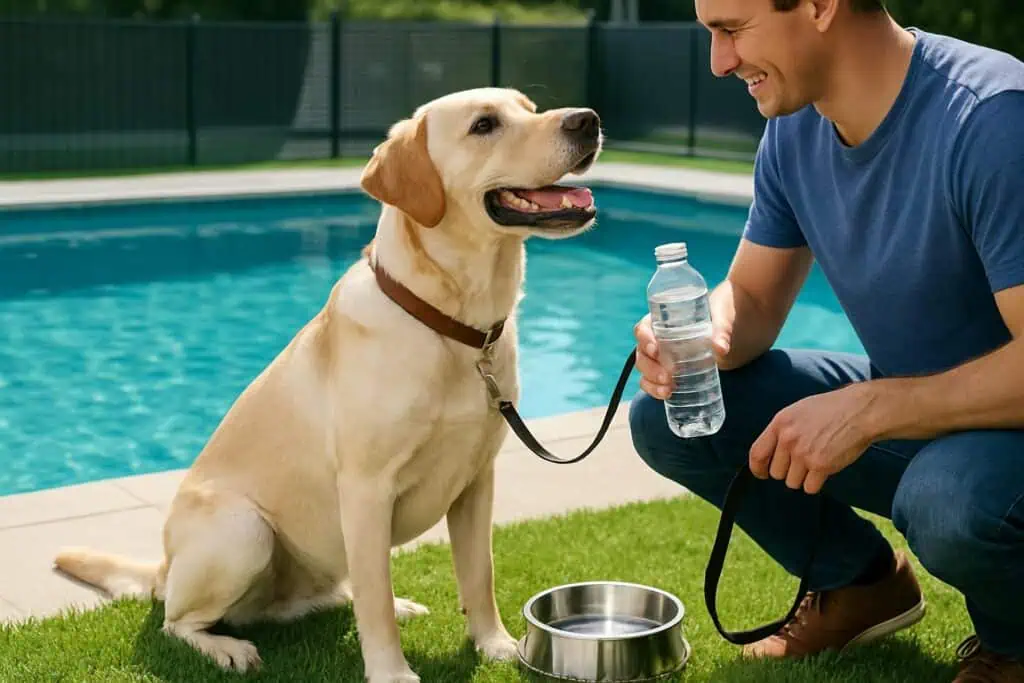
Sometimes dogs bounce back from mild overheating at home, but if things get bad, a veterinarian is your best bet. Knowing when to call your veterinarian for help can save your dog’s life.
Emergency Signs of a Dog Overheating
Certain symptoms mean your dog’s gone from just too hot to a full-blown emergency. Watch for:
- Collapse or loss of coordination
- Disorientation or confusion
- Rapid heartbeat
- Vomiting or diarrhea
- Seizures
- Gums that look bright red, pale, or blue
- Trouble breathing or really forceful panting
If you see any of this, especially after swimming or playing in the sun, get to a vet or emergency hospital immediately. Heat stroke can do serious damage or worse if you wait.
What to Expect at the Vet
When you arrive at the clinic, the vet jumps into action—checking your dog’s temperature and heart rate right off the bat. Usually, they’ll start cooling your pup down with cool water or fans, trying to get that body temperature under control.
If your dog’s really struggling, the vet might hook them up to an IV to get fluids back in and give those organs some support. Blood tests? Yeah, those come into play too, just to see how dehydrated your dog is or if anything’s gone sideways because of the heat.
Sometimes, the vet will admit your dog to the clinic for a few hours just to make sure everything’s steady. If things look rough, your dog might have to stay overnight for extra care. It’s all about getting their temperature down safely and giving their organs a fighting chance.
Common Myths About Dogs and Pool Safety
A lot of people think dogs are totally safe from overheating if they’re swimming, or that every dog is some kind of tireless Olympic swimmer. Honestly, these assumptions can get dogs into trouble, especially when the sun’s blazing and the pool looks inviting.
Myth: Dogs Cannot Overheat in Water
There’s this common misconception that water shields dogs from overheating. Sure, swimming helps cool them off, but if the water’s warm or the sun’s relentless, dogs can still get overheated.
Dogs mostly rely on panting to cool down. If both the air and the water are hot, panting just doesn’t cut it.
Heat exhaustion symptoms:
- Heavy panting
- Glazed eyes
- Weakness or trouble standing
- Drooling or sticky gums
Some dogs won’t stop playing or swimming, even if they’re overdoing it. That can make it hard to notice when they’re actually in trouble.
Pools can be risky if there’s no shade or if the water’s not cool enough. It’s worth keeping a close eye on your dog for any signs of overheating, whether they’re splashing around or just hanging out near the water.
Misconceptions About Swim Endurance
Not every dog can handle the same amount of time or activity in the pool. Some breeds, like bulldogs and pugs, just don’t have the right body shape or airway structure for long swims—they get tired out pretty quickly.
A dog might love splashing around, but that doesn’t mean it can swim endlessly. If you assume your pup’s got endless stamina, you could be putting it at risk. Dogs that push too hard can end up exhausted, and that’s when things get dicey. If they’re too tired, they might not even make it out of the water.
Risks of overestimating endurance:
- Fatigue that can lead to panic or accidentally inhaling water
- Muscle cramps while swimming
- Not making it up the pool steps or to the edge
Other stuff matters too—like age, health, and weight. Older pups or those with medical issues can have a rougher time, especially when it’s hot out or they’re already struggling. If you notice your dog lagging behind, hesitating to swim back, or looking like they’re having a hard time moving, it’s probably time for a break (or to call it a day).




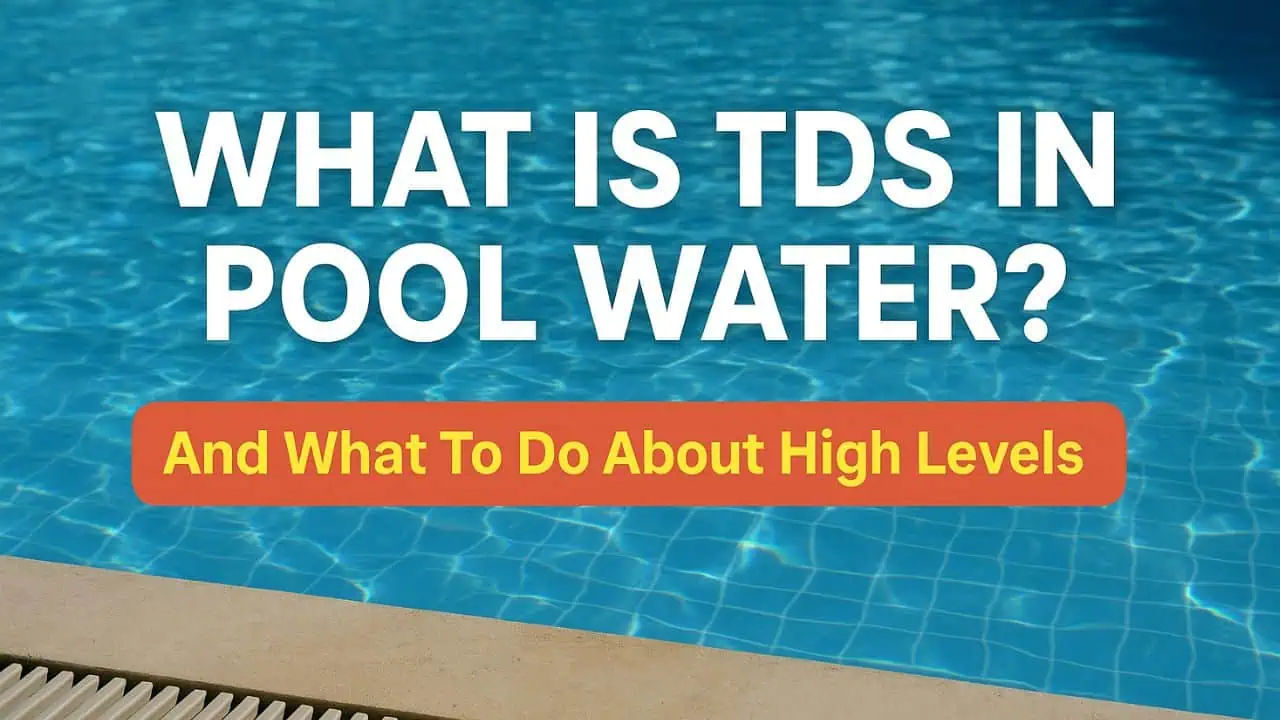
Leave a Reply